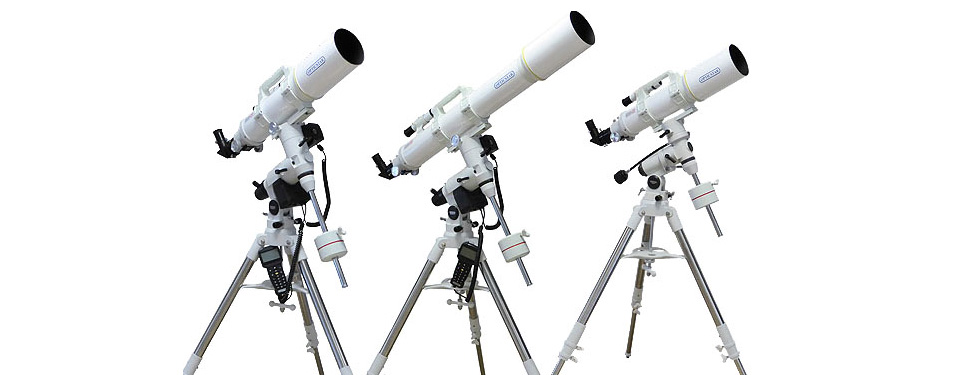The lack of a central obstruction helps to increase image contrast and sharpness when compared to obstructed telescope designs including Newtonian reflectors, Maksutovs, and SCT telescopes among others. In general, the obstruction means that all incoming light will reach the camera/eyepiece. In addition, an un-obstructed optical instrument will reveal significantly more detail on brighter objects including planets, the Moon and the Sun when compared to obstructed designs. In practice the obstruction causes a significant loss in contrast and image sharpness.
The obstruction would not be of real concern if the diameter of the obstruction was less than around 10% the telescope aperture (diameter). It does however become a concern when the obstruction exceeds 20% of the diameter of the aperture; the vast majority of modern F/10 SCT's for example have obstructions between 35%-40% in diameter. A 35%-40% obstruction would also translate to a 12%-24% light loss in such cases.
Also at an aperture of under 7-inches atmospheric turbulence has a limited effect unlike apertures of 8-inches and above. This is important during long exposures and mostly when imaging deep sky objects.
Imaging
The ARC-127 QUAD offers a fitting solution when imaging even under not ideal conditions since the scope offers everything the imager would need in such cases i.e., good aperture, flat imaging field, fast focal ratio, reduced false colour at F/4.9 and no obstruction.
Most important the ARC-127 QUAD would be ideal for narrow band imaging with any size sensor and without the need for a flattener when considering that false colour would no longer be an issue. For the same reasons and in conjunction with a short focal length the ARC-127 QUAD is ideal for imaging or viewing the Sun in H-alpha with an appropriate filter.
Imaging and viewing the Sun
Being a flat-field, air-spaced refractor with metal knife edge baffles the ARC-127 QUAD is also ideal for imaging and viewing the Sun when used with a specialist (H—alpha) Solar filter at the eyepiece end and in conjunction with a full aperture Solar heat rejection filter that is required due to the large size of the telescope’s objective lens and optical design.
Please note that suppliers of specialist, at the eyepiece, H-alpha filters recommend that the telescope’s aperture should not exceed a given size and/or a full aperture heat rejection filter should also be used in conjunction with a particular H-alpha eyepiece. Please contact the supplier of such equipment for advice.
Otherwise refractor telescopes with cemented or oil spaced objectives are not recommended for Solar work unless they are always used with a full aperture Solar filter. Newtonian and catadioptric designs in general are also not suited for use with specialist H-alpha eyepieces alone as the heat from the Sun will have an adverse effect on the small secondary mirror over time unless a full aperture Solar filter is used. White light full aperture Solar filters are inefficient in such cases as they also proportionally reduce the amount of H-alpha entering the telescope and reaching the H-alpha eyepiece.
Finally make certain that the Solar Filter you intend to use is safe, never use cheap eyepiece type Solar filters as they can crack under the heat and seriously damage your eyes.
Field of view
The ARC-127 QUAD is relatively portable due to its shorter focal length which in turn offers unusually wide fields of view for the aperture.
For example the ARC-127 F/4.9 QUAD will show a 4.2 degrees field of view with an Opticstar XS 38mm 70 degrees AFOV (apparent field of view) eyepiece. This will easily fit in the field of view particularly large objects like the Andromeda Galaxy. Eyepieces with larger AFOV will offer even wider fields of view.
Construction
A high-quality optical tube keeps the optics precisely aligned allowing for heavier optical equipment to be attached at the focuser end. The optical tube greatly benefits from anti-reflection coatings and knife-edge baffles that prevent stray light from reaching the focal plane thus increasing image contrast and sharpness further. The optical tube assembly has a dew shield that also protects the lenses from condensation forming on the objective when the telescope is used in unfavourable conditions.
The focuser's 2-inch rack & pinion focuser draw tube has an etched millimetre scale to aid with focusing and repositioning, in addition the focuser has brass compression rings to securely support and not scratch accessories. It comes with a 1.25-inch eyepiece adapter so it will accommodate both 2-inch and 1.25-inch eyepieces and other accessories.
A single–piece cradle with a carry-handle is used to lift and support the telescope on its mount. The telescope has a Vixen/Sky-Watcher type dovetail and will mount on most astronomical mounts. The carry-handle has been designed so as to enable the user to attach a DSLR, guide-scope or other accessories without the need of side-by-side platforms or similar, thus reducing costs, the total weight and the need for a heavier mount.

Opticstar ARC telescopes on equatorial mounts (mount not included with ARC optical tube assemblies).
Collimation
The ARC-127 QUAD comes collimated from the factory. If there was a need the objective could be collimated by an experienced user, three sets of easily accessible screws allow for precise collimation. Collimation can take place on a star under good atmospheric conditions or with the use of an artificial star.
Accessories
The ARC-127 QUAD comes with an 8x50mm finder scope and bracket. A 1.25-inch diagonal, and 25mm Plossl eyepieces are also included. An optional 13% transparency Moon filter is recommended as is a 2.3mm-3mm eyepiece for high power viewing.
Carries full one year UK warranty.





